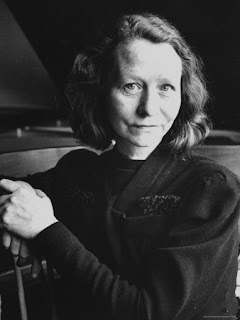The healing power of the natural world
Emily Dickinson, who suffered the trauma of epileptic fits, was often confined to the house and the company of family and a few close friends in order to avoid the stigma of public convulsions. (See Lives Like Loaded Guns by Lyndall Gordon) It created an air of mystery about her as she became increasingly reclusive. Emily found that wandering in the countryside and garden was a healing experience and many of her poems mention wild flora and fauna. She kept a pressed flower collection - quite a popular pastime in the 19th century - and became something of a botanist. Her 'Herbarium' has recently been digitalised by Harvard university library as it is now too fragile to be handled. The pages are both beautiful and sad, arranged in Emily's own fashion and labelled with her tiny writing.
In the middle of the chaos and horror we now find ourselves in, the natural world is incredibly therapeutic. It's sheer beauty and peacefulness is a comfort and a joy. I've been out on the sunny river bank this morning, looking at the flowers and trying to forget, just for a moment, the terrible things on the news channels.

The river, still decorated by the corpses of winter trees, is flowing steadily over the weir as it usually does in summer. The mill pool is mirror-still except for the ripples made by fly-catching brown trout, and the banks are yellow with Mimulus and the purple and white shades of Dame's Violet.
The Rambling Rector is gambolling happily up the cliff and through the pink elderflower, competing busily with the golden hop (which has abandoned the garden and gone feral!).
The roses are all beginning to open in the sun. This is a French aristocrat called Ghislaine de Feligonde.
Now, calmer and more peaceful than I was, I'm off to catch a train to Kent to become white van man again and face the madness of the M25 on Monday!
In the middle of the chaos and horror we now find ourselves in, the natural world is incredibly therapeutic. It's sheer beauty and peacefulness is a comfort and a joy. I've been out on the sunny river bank this morning, looking at the flowers and trying to forget, just for a moment, the terrible things on the news channels.

The river, still decorated by the corpses of winter trees, is flowing steadily over the weir as it usually does in summer. The mill pool is mirror-still except for the ripples made by fly-catching brown trout, and the banks are yellow with Mimulus and the purple and white shades of Dame's Violet.
The Rambling Rector is gambolling happily up the cliff and through the pink elderflower, competing busily with the golden hop (which has abandoned the garden and gone feral!).
The roses are all beginning to open in the sun. This is a French aristocrat called Ghislaine de Feligonde.
Now, calmer and more peaceful than I was, I'm off to catch a train to Kent to become white van man again and face the madness of the M25 on Monday!





Comments
Post a Comment